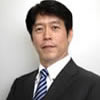Cell Mechanosensing – Programmed Research
| Research Subject | A01-1 Mechanosensing Mechanisms for Sensing Mechanical Stress Including Gravitational Changes |
|---|---|
| Research Group Leader |

|
| Research Group Members |
|
| Research Collaborator(s) |
|
In a microgravity environment, muscles and bones do not experience the same level of mechanical stress as in the 1G environment on Earth. Even on Earth, a bedridden person experiences a considerably reduced mechanical stress. This lack or reduction of mechanical stress leads to muscle atrophy and a decline in bone density. Although this physiological change occurs due to a cellular response to mechanical stimuli, its mechanism is yet unknown. The objective of this research is to understand the cell mechanosensing mechanism to sense mechanical stress, including gravity, and to develop a method to control mechanosensing.
1) Elucidation of the Cell Mechanosensing Mechanism
We will identify specific mechanosensors against mechanical stress and conduct imaging analyses of intracellular signals as well as determine the spatiotemporal information of biomolecular dynamics during gravity sensing and adaptive responses.
2) Control of the Cell Mechanosensing Mechanism
We will try to control the systemic motion by imposing mechanical stress such as an extension or introducing a modification of the signal pathways. We will also provide models for each sub-system (sensing, transmission, transduction, amplification) that constitute a cell mechanics system, construct control simulators, and create a control methodology of cellular functions in a zero gravity environment.

